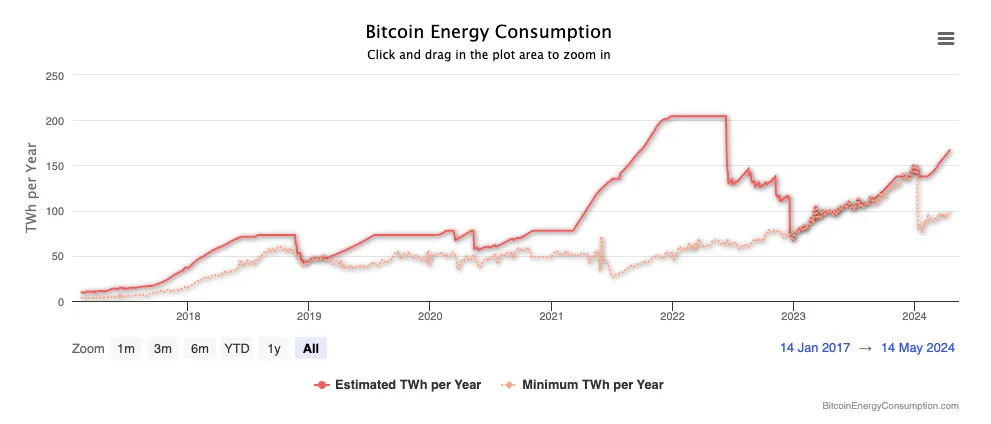Explosive growth in cryptocurrency user base
Since the 2020 halving, the global cryptocurrency user base has grown dramatically, with a surge of approximately 400%. Early estimates put the number of cryptocurrency users at around 100 million, but by the end of 2023, this number had ballooned to nearly 580 million. This significant increase not only reflects the widespread acceptance and adoption of the cryptocurrency, but also sets the stage for increased demand and market dynamics for Bitcoin.
Pre-halving price rally like never before
Unlike previous cycles where significant price increases occurred following the halving, the 2024 event began with significant price increases. Bitcoin hit an all-time high of $73,600 on March 13, 2024, demonstrating market maturity and anticipation of the halving effect well before the actual event occurred. This unique pre-halving surge could signal more predictable and responsive market behavior than has been seen in previous cycles.

Bitcoin energy consumption. Source: Digiconomist
Miners Enter Halving in Stronger Financial Position
The mining sector has shown resilience and strategic adaptation, with miners entering this halving cycle in a healthier financial position compared to past events. Greater control over operating costs, including electricity, combined with the benefit of advance price increases, provided a more stable basis for mining operations. Additionally, the transition to sustainable energy sources continues, with a significant portion of mining now powered by renewable energy.
First Halving via U.S. Spot Bitcoin ETF
This halving marks the first time a Bitcoin spot ETF exists in the United States, marking a monumental change in the investment environment. Launched in January 2024, this ETF fundamentally changed the demand dynamics of Bitcoin by opening the floodgates to institutional investors. The introduction of these financial products not only increased Bitcoin’s liquidity, but also further solidified its legitimacy as a mainstream financial asset.
Improved network security and decentralization
Starting in 2020, Bitcoin has seen significant improvements in network security and has become much more decentralized. The geographic distribution of mining activity is now more distributed, reducing the concentration of hashing power and improving the network’s resilience to attacks. This decentralization is critical to the overall stability and security of the Bitcoin network.
BlackRock owns more than 1,000 ETFs worldwide. $ goes (0.1% of total product lines) accounts for 24% of net flows YTD. Oh, and it was just released. IMO it would be strange to cover all the angles without being fascinated by it.
— Eric Balchunas (@EricBalchunas) April 19, 2024

